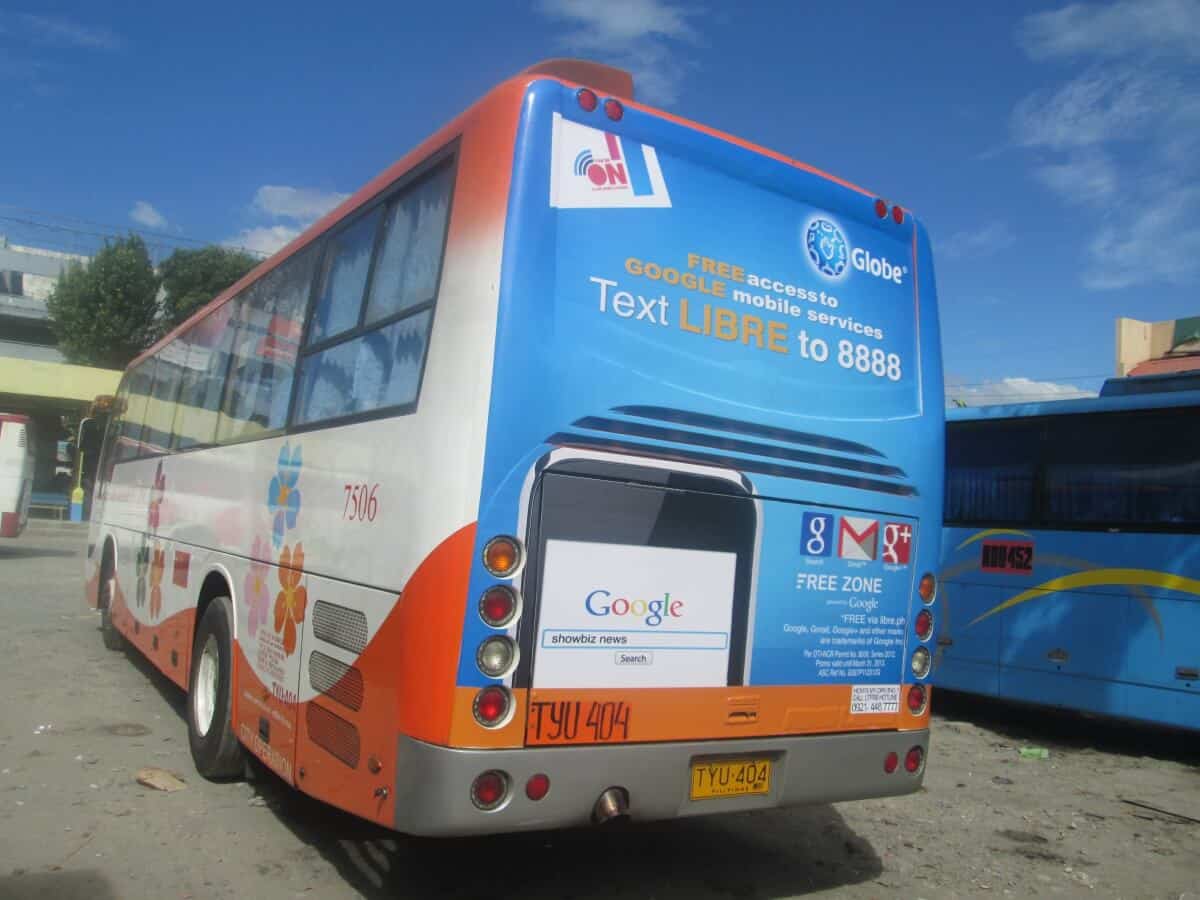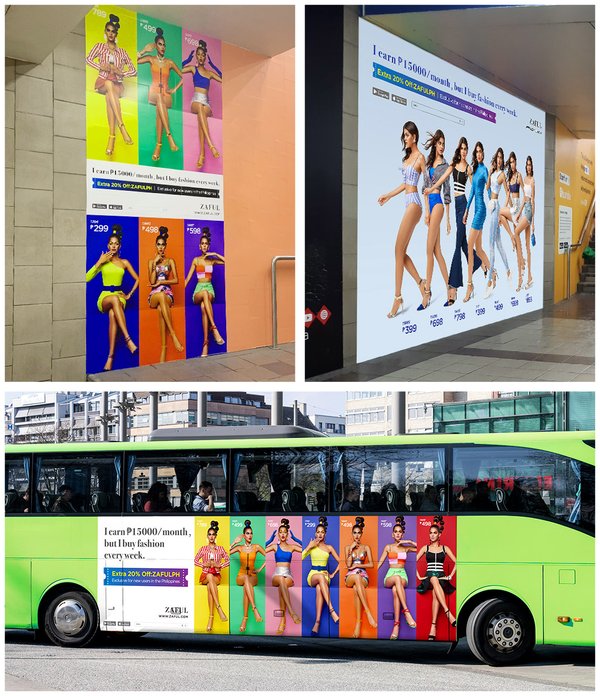Budget Friendly Transit Advertising Philippines for Brand Understanding
Budget Friendly Transit Advertising Philippines for Brand Understanding
Blog Article
Recognizing the Role of Transit Marketing in Enhancing Brand Name Exposure and Consumer Involvement
Transit marketing has actually arised as a crucial element in the advertising and marketing landscape, offering distinct possibilities for brands to boost their exposure and involve customers successfully. With the capacity to get to a diverse and restricted audience throughout their daily commutes, these advertising and marketing methods are not simply about presence; they are regarding developing purposeful connections with prospective clients. As we explore the multifaceted benefits and innovative strategies within transit advertising, it ends up being vital to take into consideration how these components jointly affect consumer assumption and habits, questioning regarding their lasting influence on brand name commitment.
Definition of Transit Advertising
Transportation marketing refers to the technique of advertising items, services, or brand names with advertisements placed in and around public transport systems. This type of advertising encompasses a variety of placements, consisting of posters on buses and trains, electronic displays at transportation terminals, and covers on the exterior of cars. It intends to reach a diverse target market, profiting from the high foot web traffic related to public transportation.
Transportation marketing is purposefully placed to catch the focus of commuters, that usually spend substantial time taking a trip or waiting. By integrating advertisements right into the everyday routines of individuals, brand names can develop an enduring impact and foster brand acknowledgment. The tool is specifically effective in urban environments, where public transportation is a main mode of travel.
Furthermore, transit advertising can facilitate localized targeting, enabling businesses to get to specific demographics based on transportation paths and terminal areas. As city populaces expand and using public transportation rises, this marketing technique has actually gained prominence as an important element of integrated marketing strategies. The vibrant nature of transportation advertising and marketing, integrated with its capability to involve consumers in a captive atmosphere, highlights its significance in contemporary marketing techniques.
Benefits of Transit Advertising
The performance of transportation marketing lies in its capability to supply a wide variety of advantages to brands seeking to boost exposure and interaction. One of the key advantages is the substantial reach it provides; transit advertisements can efficiently target varied demographics across city locations, getting to both pedestrians and travelers alike. This broad direct exposure substantially boosts brand name awareness.
Another advantage is the high regularity of perceptions. As transportation cars take a trip along well-known routes and stop at numerous places, they develop repeated direct exposure that strengthens brand name messages. This frequency promotes familiarity, which is essential in customer decision-making.
Transit marketing is likewise affordable compared to other media platforms. Offered its large reach and capacity for high impacts, brand names often experience a lower cost per thousand impressions (CPM), optimizing their marketing spending plan.
Furthermore, transportation advertisements can produce a feeling of area connection. By aligning with local transportation systems, brands can reverberate with local target markets and cultivate a sense of neighborhood pride. This localized approach boosts brand name loyalty and involvement, making transportation advertising and marketing a compelling selection for businesses intending to strengthen their existence in the market.

Effective Methods for Transportation Projects
To take full advantage of the influence of transit projects, brand names must leverage calculated planning and execution customized to their target audience. Initially, determining the demographic characteristics of the target market making use of public transportation is essential. This permits brands to create customized messaging that resonates with possible clients.
Next, choosing the ideal transit mediums is necessary. Whether making use of bus wraps, metro posters, or digital displays, each tool has special benefits that can enhance presence. As an example, vivid visuals on bus covers can stand out, while electronic ads can be upgraded often to reflect timely promotions.
Moreover, incorporating a cohesive branding strategy across transit systems makes sure consistency and strengthens the brand name's identity. Using appealing layouts and remarkable taglines will strengthen brand recall amongst travelers.
Finally, timing is a crucial consider performing successful transportation projects. Introducing projects throughout optimal traveling hours or regional events can significantly boost exposure and interaction. By using these approaches, brands can efficiently harness the possibility of transportation advertising and marketing, cultivating better understanding and link with their target market. Inevitably, a well-executed transportation campaign can drive significant growth in brand name visibility and customer involvement.

Measuring Effect and Involvement
In reviewing the performance of transit marketing projects, exact dimension of impact and engagement is essential for brand names looking for to enhance their advertising and marketing methods. Metrics such as reach, regularity, and impacts give foundational information to assess visibility. Evaluating these aspects helps determine exactly how several possible clients are exposed to the advertisements during their day-to-day commutes.
Interaction can be additional determined through customer interactions, such as website over at this website traffic, social media sites discusses, and direct feedbacks to calls-to-action featured in the ads. Making use of devices like QR codes or one-of-a-kind Links can help with monitoring of consumer actions straight connected to transportation campaigns. Surveys and comments mechanisms likewise offer as beneficial methods to collect qualitative information on consumer assumptions and recall of the advertisement.
Furthermore, progressed analytics and acknowledgment versions can associate transit Home Page direct exposure with subsequent buying actions, supplying understandings into the roi. By utilizing a detailed approach that integrates qualitative and quantitative steps, brand names can develop a nuanced understanding of their transit advertising influence. Inevitably, this data-driven method allows brand names to refine their campaigns, guaranteeing they reverberate effectively with target market and enhance total brand name exposure.
Case Research Studies of Successful Campaigns
Successful transit advertising projects function as compelling instances of just how efficient methods can boost brand name exposure and involvement. Transit Advertising Philippines. One significant instance is the "I Love New York" project, which transformed the city's image and drew in millions of vacationers. By making use of metro advertisements, signboards, and bus wraps, the campaign produced a strong, natural brand identity, causing a substantial uptick in tourism and local company patronage
Another exemplary campaign is Coca-Cola's "Share a Coke" campaign, which leveraged transportation marketing to individualize the brand name experience. By featuring preferred names on promotional products across numerous transit systems, Coca-Cola fostered a much deeper psychological link with consumers, encouraging them to share their experiences on social media.
In addition, the "Got Milk?" project effectively made use of mass transit ads to get to a broad target market, reinforcing the message of the relevance of milk in a balanced diet regimen. The campaign saw a measurable boost in milk intake in target demographics.
These instance researches illustrate that when executed attentively, transportation marketing can dramatically enhance brand visibility, foster consumer involvement, and drive quantifiable outcomes, showing its essential duty in modern advertising strategies. - Transit Advertising Philippines
Final Thought
To conclude, transportation marketing acts as a vital tool for boosting brand visibility and promoting consumer engagement. By using tactically put advertisements within public transportation systems, brands can properly strengthen and reach diverse target markets acknowledgment view website through regular direct exposure. The execution of targeted messaging and ingenious techniques even more magnifies the effect of transit campaigns. Eventually, the capacity to measure engagement and evaluate successful case research studies emphasizes the effectiveness of transportation advertising and marketing in driving brand loyalty and customer communications.
Transit advertising has emerged as an essential element in the advertising and marketing landscape, providing one-of-a-kind chances for brands to elevate their exposure and engage consumers effectively.In addition, transportation advertising and marketing can assist in local targeting, permitting services to reach details demographics based on transit courses and terminal locations.In reviewing the effectiveness of transportation advertising and marketing campaigns, accurate dimension of influence and interaction is necessary for brand names seeking to maximize their advertising strategies.Effective transportation advertising and marketing campaigns offer as compelling instances of exactly how reliable techniques can elevate brand exposure and interaction.In verdict, transportation marketing offers as a vital tool for boosting brand visibility and promoting customer involvement.
Report this page